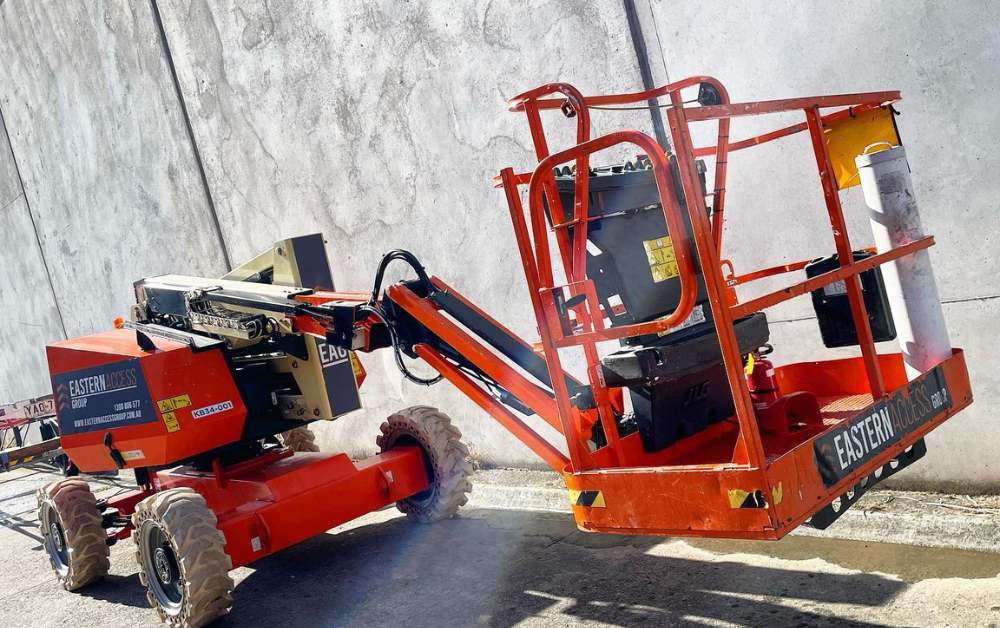Most Common Mistakes When Operating Manlifts and How To Avoid
Table of Contents
Manlifts are essential in many sectors because they allow people to reach heights quickly and safely. Manlifts offer accessibility for any operation requiring elevation, including building and maintenance work. These type of tasks calls for a reliable elevated work equipment to minimize accidents and guarantee efficient processes.
But just like any other jobs, accidents come when you least expected it no body wants that!
Read on as we will be sharing with you the most common mistakes that we sometimes personally encounter when using manlifts, and of course the safety tips on how to prevent this from happening.
Mistakes to Avoid When Operating Manlifts
Pre-Operational Checks are Ignored
It’s crucial to do a comprehensive pre-operation examination before employing a man lift. This includes assessing the machine for any obvious damage, verifying the hydraulic and electrical systems, checking guardrails and emergency controls, and ensuring all essential fluid levels are correct. Failure to do these inspections may result in operational problems, equipment faults, or even catastrophic failures while the equipment is in use.
Disregarding Proper Training
Manlift operation requires a specialized set of abilities and understanding. Lack of training increases the risk of accidents because operators are less likely to know how to operate controls properly, move equipment safely, or react to crises. Adequate training guarantees that operators are knowledgeable about the man lift’s complexities and can avoid possible dangers.
Overloading the Platform
Each man lift a specified weight limit that should never be exceeded. The lift mechanism may become overworked and lose stability if the platform is loaded above its designated capacity with humans, tools, or equipment. This might lead to mechanical issues, tipping, or collapse, threatening nearby people and the operators.
Inadequate Fall Protection
A manlift’s platform is high, with a substantial risk of falling from that height. Operators run a serious risk if the right fall protection gear, including harnesses and lanyards, is unused. The continual use of fall protection equipment is extremely necessary due to the serious injuries or fatalities that might result from a fall from a man lift.
Lack of Communication
When using a manlift, communication is essential, especially between the operator and ground staff. Please create appropriate communication channels to avoid misunderstandings, incorrect man lift placement, or unintentional accidents with objects. Accidents are less likely when there is clear communication so that everyone is aware of the actions and intentions of the equipment.
Operating in Hazardous Conditions
Manlifts should only be used in secure and appropriate environments. When using a manlift in bad weather, such as strong winds or heavy rain, the platform may become unstable, which makes it more difficult to handle and raises the danger of accidents. Similarly, using a man lift on shaky or uneven ground increases the risk of tipping or falling.
Neglecting Regular Maintenance
Like any machinery, manlifts need routine maintenance to operate effectively and securely. Unexpected breakdowns during operation can occur if typical maintenance chores like monitoring fluid levels, examining parts, and servicing mechanical elements are neglected. These failures can put neighboring users and operators in danger, cost a lot to fix, and cause delays.

Safety Tips When Using Man Lift Equipment
When using man lift equipment, safety should always be taken first. Adhering to correct safety practices is crucial when working on building sites, maintenance projects, or any elevated task to prevent accidents and maintain the well-being of all people involved. Here are some important safety precautions to remember:
Receive Comprehensive Training
When it comes to man lift equipment, proper training is essential. Operators should get extensive training that includes using the controls, emergency procedures, and safety regulations. This training ensures that operators are confident and competent in using the equipment in various settings, reducing the chance of mishaps caused by a lack of expertise.
Perform Pre-Operational Checks
Conduct rigorous pre-operation checks before employing man lift equipment. This includes physically assessing the equipment for obvious damage, testing the effectiveness of safety elements like guardrails and emergency stop buttons, and confirming that all systems are operational. These tests aid in detecting any flaws that might jeopardize operational safety.
Wear PPE (Personal Protective Equipment)
Personal Protective Equipment (PPE) is an important part of workplace safety. Hard helmets, high-visibility vests, and robust boots should be worn by operators and workers. For fall protection, operators, in particular, must wear a full-body harness and utilize a lanyard, especially while operating at elevated heights.
Recognize Weight Limits
Every piece of man lift equipment has a maximum weight capability. Excessive use can cause instability and, perhaps, fatal accidents. Understanding the weight restrictions and ensuring that the total weight of workers, tools, and materials does not exceed this limit is critical.
Stabilize on Level Ground
Man lift safety is dependent on proper setup. Place the equipment on firm, level ground at all times. If the equipment has stabilizers or outriggers, make sure they are properly deployed to prevent tipping during operation. Ignoring appropriate stabilization can lead to a dangerous scenario for operators and others nearby.
Be cautious of Your Environment
During a man lift operation, being aware of your surroundings is critical. Look for potential risks such as overhead power wires, barriers, and uneven ground. Accidentally contacting electrical lines might result in electric shock or other catastrophic injuries. A fundamental part of safe operation is maintaining a safe distance and avoiding dangers.
Frequently Asked Questions
While certain man lifts are built for small locations, not all types are appropriate for such situations. Selecting a lift that fits within the given area and allows for safe movement is critical. Check the equipment specs and manufacturer directions at all times.
When determining the load-bearing capability of the ground, consider the weight of the man lift, its load, and the terrain. If you are unsure, call a structural engineer or the equipment manufacturer to see if the ground can hold the weight of the lift without sinking or becoming unstable.
Guardrails, emergency stop buttons, tilt sensors, alarms, and interlock systems are among the safety elements to look for in a man lift. Some lifts may also incorporate non-marking tires for indoor usage, self-leveling platforms, and modern control systems that improve safety and convenience.
If the man lift becomes stuck or malfunctions when elevated, the operator should try to lower the platform using the lift’s controls. If this fails, follow the manufacturer’s emergency protocols, including contacting technical support or emergency services.
Conclusion
Manlift equipment is becoming more adaptable as technology progresses, providing solutions for various industries and jobs. With each advancement comes the obligation to keep current on upgrades, laws, and growing safety requirements. Educating yourself and your team regularly guarantees that your work with man lifts remains at the forefront of safety and efficiency.
Remember that safe operation is a team effort. Following the insights and ideas presented in this book will not only protect your well-being. Still, it will also contribute to an industry-wide commitment to safety excellence. We urge you to share this information with your coworkers and peers, promoting a safety culture that permeates every activity utilizing man lift equipment. Let us work together to improve safety, knowledge, and prosperity in man lifts.

